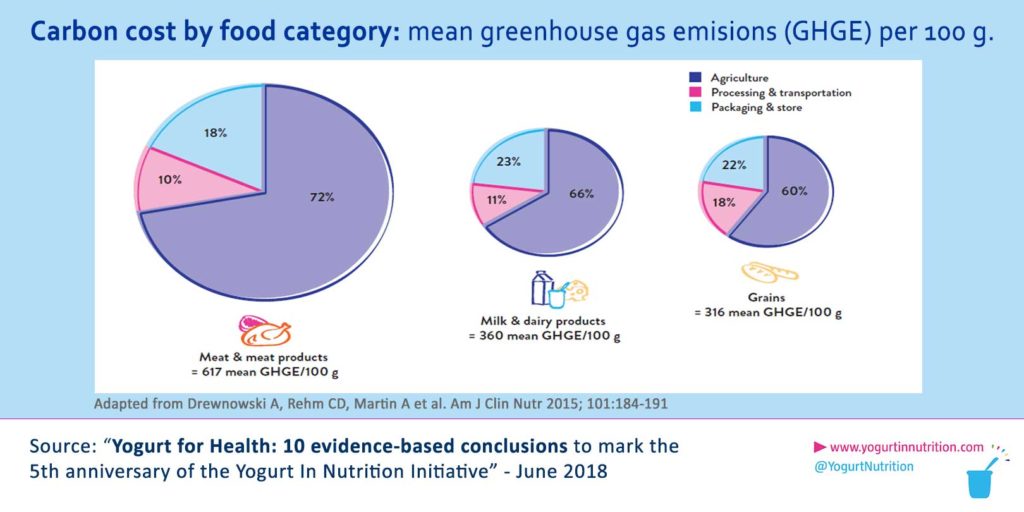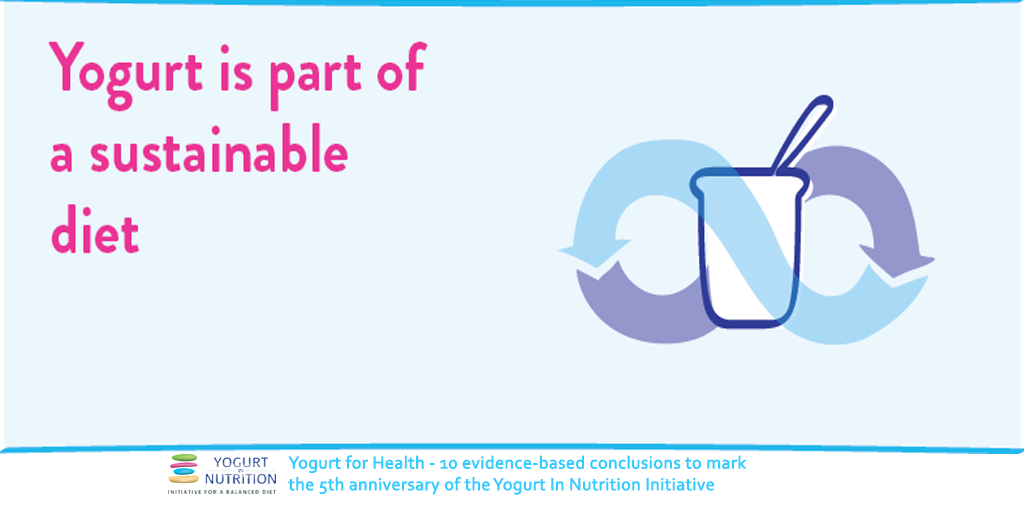“Yogurt is part of a sustainable diet” is one of the 10 evidence-based conclusions made by the YINI board about the health effects of yogurt… learn more below
Yogurt is a nutrient-dense food
Yogurt is well-positioned to be an integral part of a sustainable diets because of its high nutrient value.
- In nutrient profiling models, some of the highest nutrient density scores are awarded to unsweetened and low-saturated fat yogurts.
- Yogurt provides more nutrients than calories relative
to the body’s needs.
Yogurt has a low environmental footprint
Typically, nutrient-rich foods have a higher environmental impact than those with a poor nutrient content. However, the environmental cost must be weighed against nutrient needs for health.
- Greenhouse gases – gaseous compounds in the atmosphere that trap and hold heat – are a major factor in global warming and climate change.
- Greenhouse gas emissions (GHGEs) occur at every stage of the food production and consumption cycle – from farming and agricultural practices to packaging, transport and storage in the supermarket and the home.
- Milk and yogurt are higher in carbon cost than nutrient-poor foods such as sweetened drinks, sugar and sweets.
- However, yogurt compares favourably with other healthy foods in terms of GHGE. Yogurt’s GHGE is lower than the level predicted by its nutrient density.
- In a UK diet-modelling study linking nutrient composition with GHGEs, the inclusion of yogurt was associated with a 36% reduction in GHGEs (based on emissions per person).
- Similarly, yogurt and other dairy products had a relatively low carbon cost in a food labelling initiative from the French retailer, Casino, which combined GHGEs and nutrient data
- Modern farming practices are reducing the impact of dairy foods on natural resources and the environment.

References:
- Drewnowski A. Measures and metrics of sustainable diets with a focus on milk, yogurt, and dairy products. Nutr Rev 2018;76:21–8.
Drewnowski A, Rehm CD, Martin A, et al. Energy and nutrient density of foods in relation to their carbon footprint. Am J Clin Nutr 2015;101:184–91.
- Macdiarmid JI, Kyle J, Horgan GW, et al. Sustainable diets for the future: can we contribute to reducing greenhouse gas emissions by eating a healthy diet? Am J Clin Nutr 2012;96:632–9.



